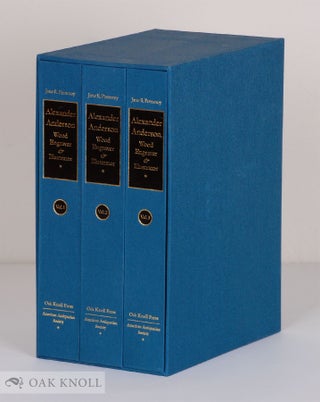Foreword
There is a universal human impulse to enhance the meaning of the word by means of a picture. To do so well requires the skill of an accomplished artist. This book guides us to the work of such a one, Dr. Alexander Anderson. The result of more than twenty years of disciplined effort, Jane Pomeroy has found and documented Anderson's wood-engraved illustrations in hundreds of publications dating from 1791 through 1868.
In addition to being America's first wood engraver, Alexander Anderson was among our most effective practitioners of this demanding art. Born in 1775 and dying in 1870, his life encompassed the entire period of commercial illustration by means of printed, type-high engravings. By the end of his life new methods had overtaken the craft. During his early years Anderson was a contemporary of Thomas Bewick. Bewick's own work inspired the young practicing physician to adopt the art of white-line engraving on end-grain hard wood in the early 1790s. Anderson's wood-engraved cuts in The Looking Glass for the Mind, issued in 1795 (item 25), marks the earliest American publication of this means of illustration. He not only inaugurated the genre in America, he trained some of our earliest practitioners. Joseph A. Adams, whose wood engravings in Harper's Illustrated and Pictorial Bible (1846) mark one of the greatest American achievements of the art, recalled how Anderson had encouraged his first attempts. But, Anderson's own artistic abilities were of a very high order. He drew directly on the block with his graver achieving controlled tension between black and the white lines that made the image. His Returning from the Boar-Hunt (ca.1818) (item 587), engraved after an image by Johann Elias Ridinger, prompted W J. Linton to write of it in The History of Wood Engraving in America that "[the print] speaks for itself. No more piece of pure white line work has been done outside the Bewick circle. By pure white line I mean a line drawn with meaning [emphasis added] by the graver." Another of Anderson's contributions to American art was, not surprisingly, his illustrations of American scenes and people in the children's primers and tracts that were distributed across the nation by the thousands.
Ms. Pomeroy, a practicing letterpress printer, informs her work with a love of her craft and a thorough knowledge of its mysteries. Her extended review of Anderson's life and work and her mapping of the dissemination of his prodigious output illuminates an important element of the practices of nineteenth-century publishing in the United States. Thus, students of nineteenth-century American graphic art and of its proliferation will find the material in these volumes of great value and interest. Jane Pomeroy merits our gratitude for this gift to learning.
Marcus A. McCorison, president emeritus,
American Antiquarian Society

